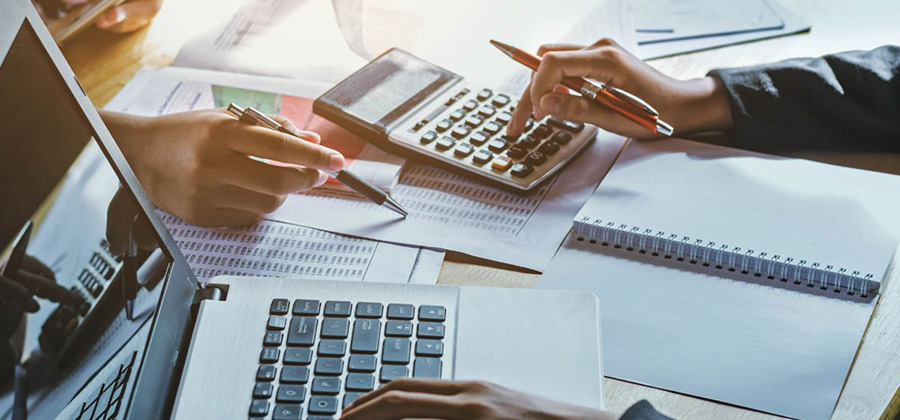A capital expenditure (CapEx) is usually the payment of cash or credit to purchase long-term physical or fixed assets that are used in a business’s operations or to help improve a business. Capital expenditures are important for companies because they allow the company to grow by investing in new property, plants, equipment, products, and technology. There are nine common types of Capital expenditures that companies invest in, which are: land, software, buildings, vehicles, office equipment, machinery, intangible assets, computer equipment, and furniture and fixtures. The expenditures are capitalized and are considered an investment by a company. Capital expenditures are important because they can have a significant impact on cash flow for a company.
Listed below are the 9 examples of Capital Expenditures and their differences.
- Land: Land can be useful for many years and is considered a capital expenditure because of that purpose. The land is different from other capital expenditures because the value of land typically does not depreciate.
- Software: software is purchased or developed for internal use and can be a significant cost for large companies. It is different from other capital expenditures because often it is custom-made for a company for a particular purpose.
- Buildings: All costs associated with acquiring or constructing buildings are capital expenditures. Buildings are different from other capital expenditures because of the amount of upkeep that are required.
- Vehicles: Companies often need a fleet of vehicles for distribution or to carry out services for customers and the costs associated with buying vehicles and their upkeep are examples of capital expenditures.
- Office Equipment: Companies often need to upgrade equipment that is used in the office that may have become obsolete or simply has worn out. Office equipment is different from other capital expenditures because they often depreciate over time.
- Machinery: Machinery is an important part of the production of goods and is considered a capital expenditure. It is different from other capital expenditures in that it often needs to be serviced.
- Intangible Assets: Patents and licenses that a company purchase is a capital expenditure. These are different from other capital expenditures because they are not physical items.
- Computer Equipment: Computer equipment, servers, laptops, desktop computers, or any technology investment would be a capital expenditure. These are different from other capital expenditures because the usefulness of the items would need to be greater than one year.
- Furniture and Fixture: Moveable furniture or fixtures that have no permanent connection to the building are capital expenditures. These items are different from other capital expenditures in that they can often be liquidated after no longer needed.
What are Capital Expenditures?
Capital expenditures are the funds used by a company for the purchase, improvement, or maintenance of long-term assets to improve the efficiency or capacity of the company. These long-term assets are physical, fixed, and non-consumable assets. They can be property, equipment, or infrastructure, and typically have a useful life of more than one accounting period. Capital expenditures can include the purchase of such items as new equipment, machinery, land, plant, buildings or warehouses, furniture and fixtures, business vehicles, software, or intangible assets such as a patent or license.
How Should Capital Expenditures Be Classified?
Capital expenditures can be classified into two types, as an expense to maintain levels of operations present within the company, and as an expense that will enable an increase in future growth. They can then be further classified as tangible, such as a machine, or intangible, such as a patent. Both intangible and tangible capital expenditures are usually considered assets since they can be sold when there is a need.
How Do Capital Expenditures Function?
Capital expenditures function to improve operational efficiency and to increase revenue for a company in the long term. They are also used to make improvements to the existing assets of a company. Capital spending is different from other types of spending which normally focus on short-term operating expenses. Capital expenditures involve a large amount of money or capital, which often requires the use of debt.
What is the Difference Between Capital Expenditures and Operational Expenditures?
Operating expenditures are expenses that are required for the daily function of a business. Operating expenditures are incurred on a recurring basis. Operating expenditure includes things like insurance, payroll, and marketing. Capital expenditures are different from operational expenditures since they are incurred to create a benefit for the business in the future. Capital expenditures are long-term in nature and are generally used to acquire things like prosperity, equipment, and technology.
| Capital Expenditures | Operational Expenditures |
| Can’t be completely deducted in the period when they were caused. Tangible resources are devalued, and intangible resources are amortized over a long period of time. | Operating expenses or working costs are completely deducted in the bookkeeping period during which they were caused. |
| Buying seldom starts to lead the pack, yet it just aids the acquisition of the thing. The arrangement cycle likewise takes significantly longer. | Ordinary things are welcomed consistently, and the minimum stock levels are kept. It additionally doesn’t bring about any repair costs or maintenance costs. |
| Costs incurred for buying the income-producing property. | Costs related to the activity and support or maintenance and operation of an income-producing property. |
| Purchasing equipment and machinery, procuring intellectual property and innovation resources like trademarks, and patents. | Maintenance, and repair of machinery, utilities, rent, and wages. |



